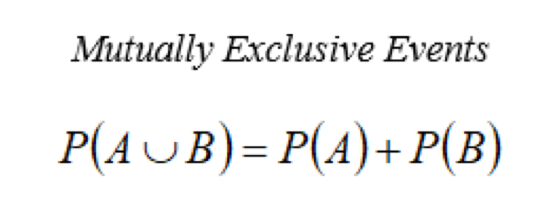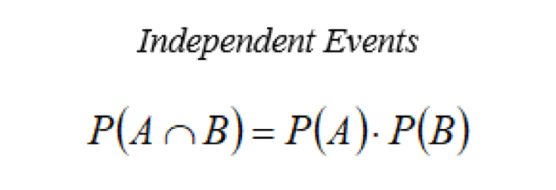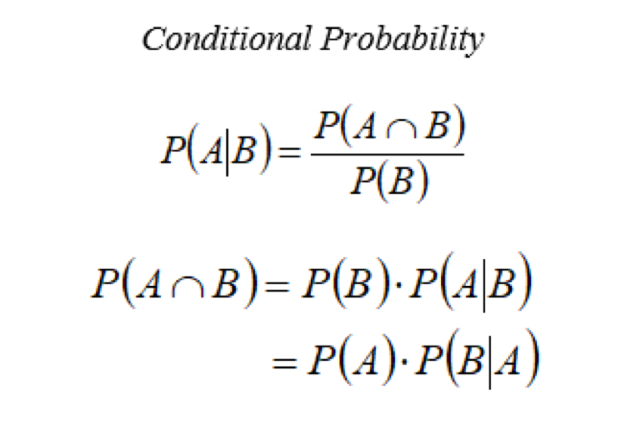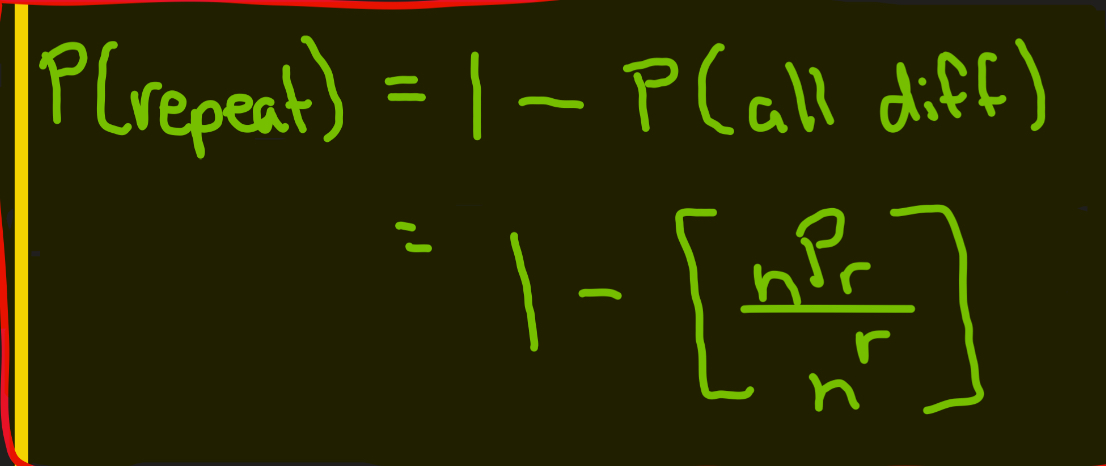Data Management Probability Formulas
1/14
Earn XP
Description and Tags
These flashcards focus on key concepts and formulas related to Data Management and Probability, including unions, intersections, and various probability formulas.
Name | Mastery | Learn | Test | Matching | Spaced |
|---|
No study sessions yet.
15 Terms
Union (AUB)
All outcomes in A, B, or both.
Intersection (A∩B)
Only outcomes in both A and B.
Counting formula for two sets
n(AUB) = n(A) + n(B) - n(A∩B), finds the # of ways A or B happens

Counting formula for three sets
n(AUBUC) = n(A) + n(B) + n(C) - n(A∩B) - n(A∩C) - n(B∩C) + n(A∩B∩C), finds the # of ways A, B, or C happens

Mutually exclusive formula
P(AUB) = P(A) + P(B), probability either A or B happens / chance of at least one occurring

Independent events formula
P(A∩B) = P(A) · P(B), finds probability that A and B happens at the same time given the events don't effect each other.

Conditional probability
P(A|B) = P(A∩B) / P(B), the probability of A given B.

Baye's formula
P(Aₖ | E) = P( E | Aₖ) * P(Aₖ)) / Σi=1 P(Aᵢ) P(E | Aᵢ), to find the probability of Aₖ happening out of several events given event E happened


Explain Baye’s Formula individual parts: i, k, P(Aₖ), P(E|Aₖ), Σi=1 P(Aᵢ) P(E | Aᵢ)
P(Aₖ | E) = P( E | Aₖ) * P(Aₖ)) / Σi=1 P(Aᵢ) P(E | Aᵢ)
k: the cause you’re focused on
i: all possible causes
P( E | Aₖ) : how likely E is given Aₖ happened
Σi=1 P(Aᵢ) P(E | Aᵢ) : total probability of E accounting for all causes
Odds in favour formula
P(A) / P(A’) = P(A) / (1 - P(A)) = success / failed

Odds against formula
P(A’)/P(A) = 1-P(A)/P(A) = failed / success

Odds in favour (money) formula
Money wagered / money won
Probability formula
Success / total
Birthday problem
P(repeat) = 1 - [ nPr / n^r]
![<p>P(repeat) = 1 - [ nPr / n^r]</p>](https://knowt-user-attachments.s3.amazonaws.com/6cb777ac-bda3-4698-90f7-497943b862b1.jpg)

What each component of the birthday problem means: n, r, nPr, and n^r, all together
n - # of options for each choice
r - # of slots you are filling
nPr - # of ways to choose r things from n without repeats and with order mattering
n^r - total # outcomes with repeats
All together - # of ways to assign unique values to r slots, divided by the total number of all possible assignments, including repeats to find probability that no two selections are the same